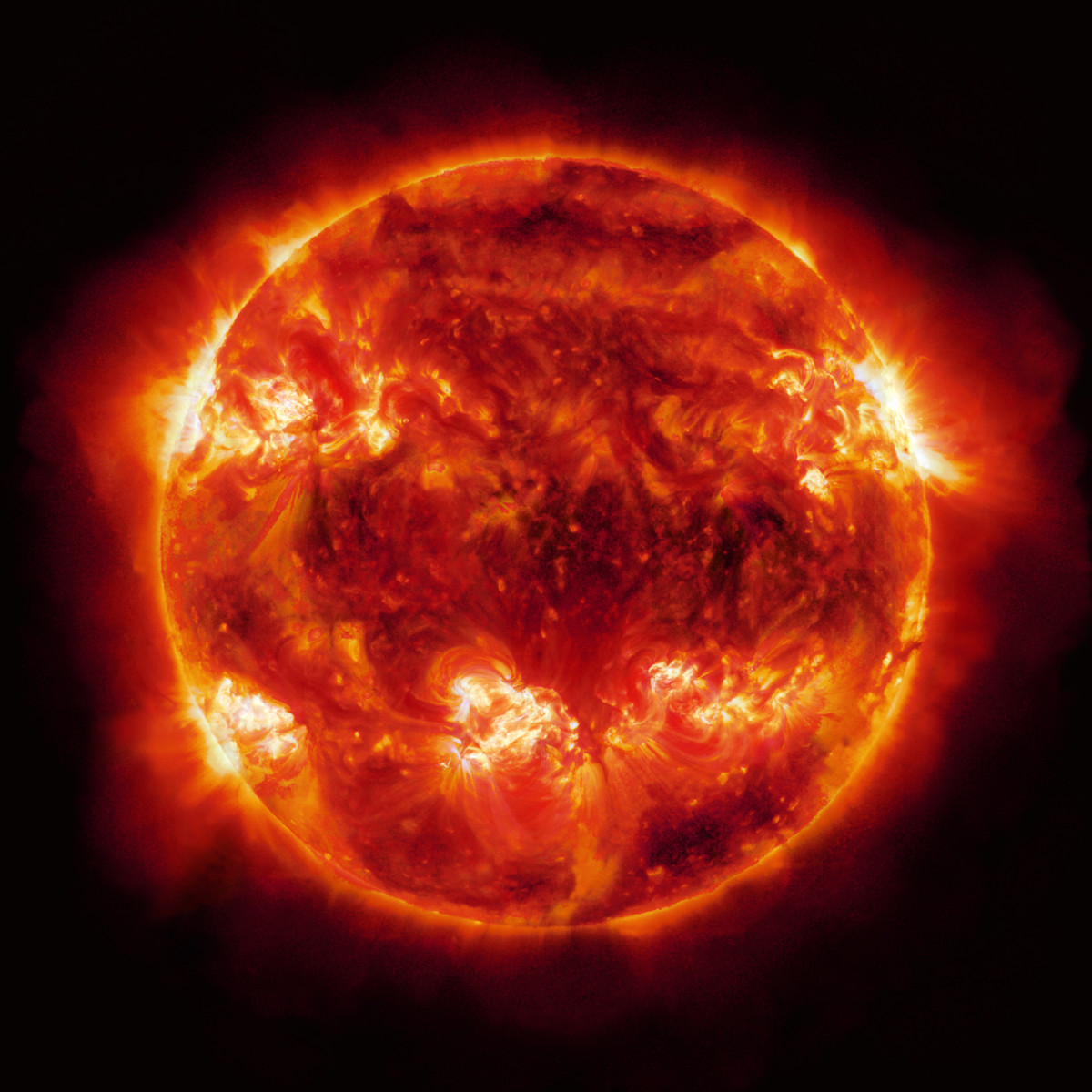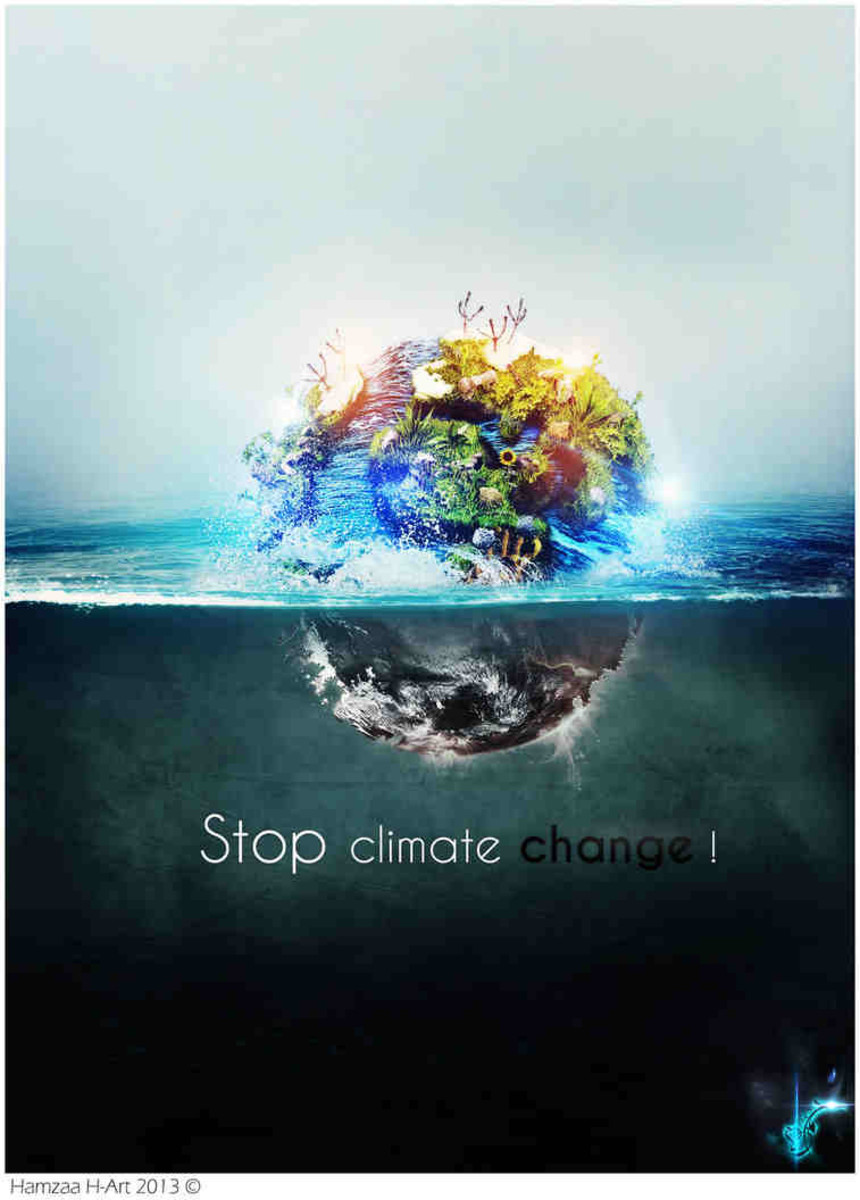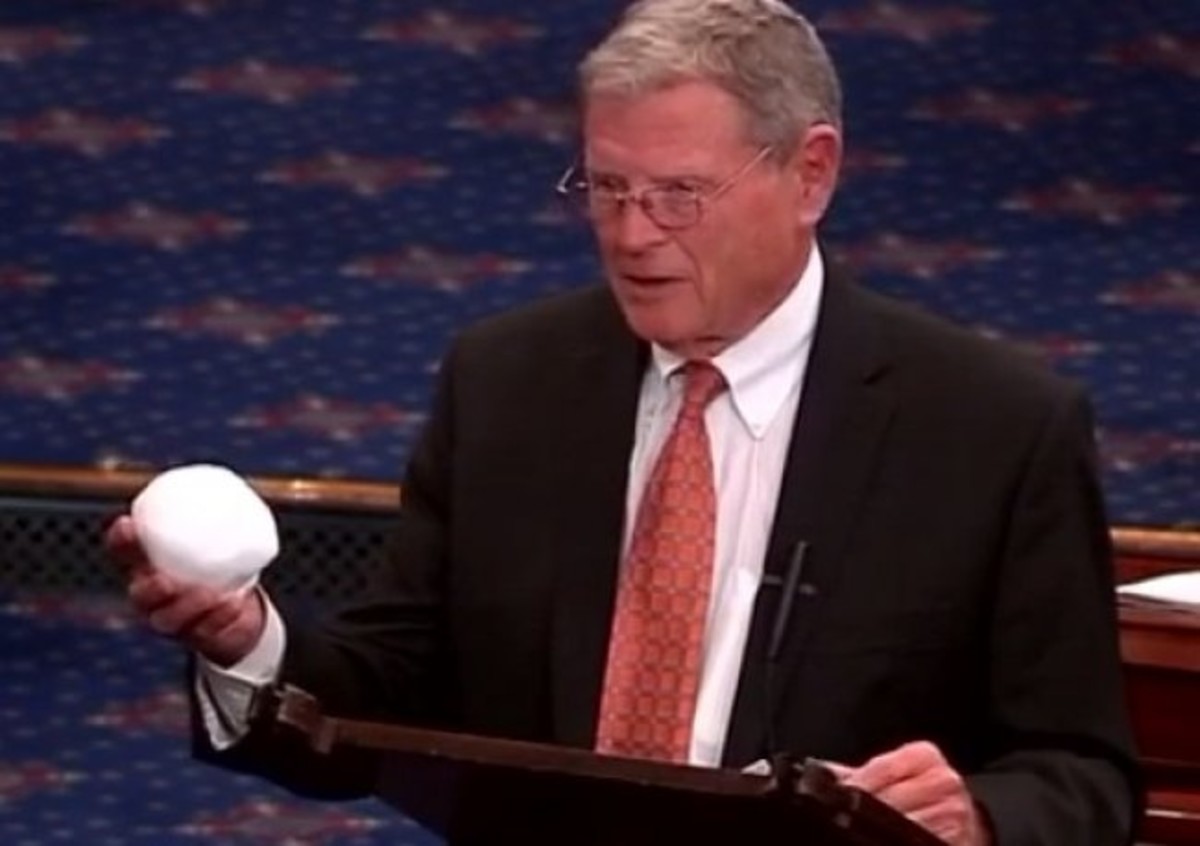Global Warming Solutions: How We Can Prevent Catastrophic Climate Change
Why I'm Writing This
This article was inspired by several things, most immediately this astonishingly depressing report by ClimateProgress. Like any other human being, my brain simply can't handle such bleakness. Denial is much more appealing.
As mother of a four year old child, however, blissful ignorance is impossible. In the business-as-usual carbon emissions scenario, catastrophic climate change will be well underway by 2050 - a date on which I hope to still be alive - and by 2100 - a date on which my daughter and certainly my grandchildren should expect to be alive - will have turned our "small blue dot" from a paradise into a hellhole. I regard it as my duty to do whatever I can to ensure that she will not grow up to a world so immeasurably damaged.
Contrary to certain snide and oft-repeated suggestions in the forums here on HubPages, preventing catastrophic global warming does not require that I or any other human being should stop breathing before our time. Nor would it be the economic nightmare painted by oil and gas companies hoping to hang on to their record profits for as long as possible. In fact, a respected study by the McKinsey Global Institute found the net cost would be somewhere in the range of 0.6–1.4 percent of global GDP by 2030, substantially less, for example, than the 3.3% of global GDP spent on insurance as of 2005, a figure that could be expected to rise dramatically in the face of more frequent extreme weather events.
Taking immediate action to prevent and prepare for global climate change may, in fact, be the only way we will avoid certain economic disaster. We stand at a crossroads, and I've attempted to lay out our two main choices in this article in language as simple and non-scientific as possible: the nightmare we may face if we don't take action, and the solutions we can employ to prevent it.
And hey, check it out! This sentence will be the only time in this entire article that I mention the terms "carbon offsets," "carbon trading," "cap-and-trade," or "biofuels."
The Bad News
Global climate change has the potential to be the single greatest challenge ever faced by the human race. For nearly all of recorded human history, atmospheric levels of carbon dioxide have remained at approximately 275-280 parts per million (ppm). In the last 200 years, the figure has increased to more than 390 ppm, and is rising at a rate of about 2 ppm per year. The majority of the increase has occurred in the last 50 years, thanks to a combination of many factors including fossil fuel burning and deforestation.
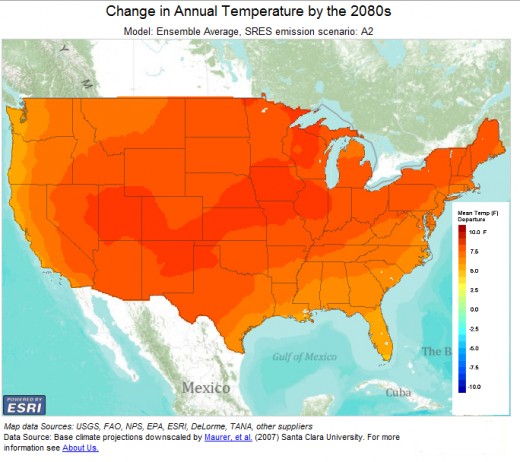
If current trends continue, atmospheric carbon levels are expected to reach 1000 ppm by the year 2100 due to a combination of human activity and several natural climate feedback loops.
The consequences of such a rise would be staggering:
- A global average rise in temperature of 5.5 - 7.1° C. The increase in temperature would not be even across all regions of the world. The Arctic, for example, could expect to see average warming of more than 15º C (nearly 30° F), while the continental United States would see an increase of about 9-11° F. To put this in a little perspective, Kansas could expect to see temperatures above 90° F for 120 days of the year, and temperatures of 122° F would not be unusual across much of the central, western, and southern US. To put it in a little more perspective, remember that photosynthesis starts to break down at temperatures above 95° F, and ceases entirely above 105° F, so Canada will get to claim the US's title as "breadbasket of the world" and large regions of the US itself could turn into Dust Bowls.
- Sea level rise of 5 feet or more, increasing at a rate of approximately 10-20 inches every decade for centuries as the Greenland and Antarctic ice sheets melted. A 5 foot rise would inundate many small island nations, 17% of Bangladesh, and approximately 13,000 square miles of the United States, including most of southern Louisiana and Florida.
- Unprecedented drought and flooding across much of the world. If current emission levels continue, the US Southwest is expected to be in a permanent state of drought by 2050, and the Mediterranean region even worse. Parts of India, on the other hand, could expect a 20% increase in rainfall, potentially leading to an increase in catastrophic floods of the sort that struck Pakistan and Afghanistan in 2010.
- More severe weather events. Scientists estimate that every 1° C increase in sea-surface temperatures leads to a 31% increase in the global frequency of category 4 and 5 hurricanes per year. Other extreme weather events are also expected to increase in frequency, including droughts, floods, and, ironically, blizzards. Warmer air holds more moisture, allowing it to suck up more water from soils and vegetation in one region (soil moisture levels in parts of the US Southwest, for example, could drop by up to 50% by 2100) and drop larger payloads of rain or snow (depending on the region and the season) on others.
- Mass extinction of 50% or more of all species. At atmospheric carbon levels above 500 ppm, the ocean becomes too acidic to support calcification, the process by which ocean organisms such as corals and some types of phytoplankton create shells. Phytoplankton are the foundation of the ocean food chain, and their loss or significant decline would mean the end of ocean ecosystems as we know them. On land, climate is shifting too quickly for many species to keep up. Some, such as polar bears, may literally have their homes melt out from underneath them, while others, such as lodgepole pines, will be threatened by new pests, diseases, or invasive exotics.
- and much more. If you live in the United States, the US Global Change Research Program has prepared a detailed report of projected climate change impacts by region and the American Security Project has prepared reports of projected climate change impacts by state.
To make matters worse, projections of 1000 ppm by 2100 do NOT take into account one of the most dangerous and unpredictable climate feedback loops: the 1.5 trillion tons of frozen carbon stored in what is rapidly becoming the not-so-permafrost of Siberia and other Arctic regions. This figure is approximately twice the amount of carbon contained in the entire atmosphere, and much of it would be released in the form of methane, the most potent greenhouse gas. The consequences of such a release are too depressing even for most climatologists to contemplate, but it appears we may shortly have to: scientists have recently discovered methane bubbling up from the ocean floor near Eastern Siberia.
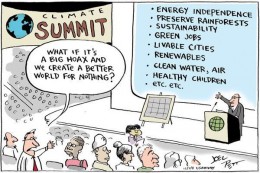
But I don't believe in anthropogenic climate change. Why should I care about reducing carbon emissions?
Even if you don't believe that carbon emissions from burning fossil fuels, deforestation, and other human activities are contributing to global climate change, it makes sense to reduce our carbon emissions.
Oil is a finite resource that contributes to many other environmental, social, and health problems. The only truly unusual thing about the Deepwater Horizon oil spill in 2010 was that it got international attention. The average year sees dozens of oil spills around the world, some small, some large. Nigeria alone has seen the equivalent of an Exxon-Valdez spill into its soils and waterways every year for more than 50 years, destroying the livelihoods of farmers and fishermen and leading to an upswing in piracy in the region. In Equador between 1963 and 1990, oil companies dumped more than 18 billion gallons of toxic wastewater and more than 17 billion gallons of crude into local waterways, causing decades of health problems for residents of the region, including dramatically increased rates of cancer and birth defects.
Burning fossil fuels also produces carbon monoxide, nitrogen oxides, sulfur oxides, and hydrocarbons, in addition to suspended particulates. Nitrogen oxides and hydrocarbons can combine in the atmosphere to form tropospheric ozone, the major component of smog. (Ozone, a necessary and important compound high in the atmosphere, is dangerous to human health at the surface.) Outdoor air pollution is believed to contribute to at least 800,000 deaths per year (some estimates say the number could be as high as 2 million) because of its role in exacerbating both chronic and acute lung conditions, including asthma, bronchitis, and pneumonia.
Finally, dependence on fossil fuels contributes to international instability and the rise of terrorism. Unfortunately, the largest oil reserves are located, for the most part, in the most unstable regions of the world, and these regions have been further destabilized by international interference designed to keep the pipelines flowing. For example, America's good relationship with the brutal fundamentalist regime of Saudi Arabia both dishonors our founding ideals as a nation and helps fund the very terrorist cells that threaten the lives of our citizens and soldiers.
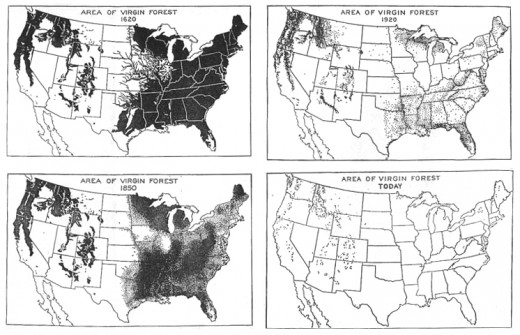
- Trees For the World
Deforestation is one of the most urgent environmental problems today, because it affects both human and environmental health in surprising ways.
Large scale deforestation, another of the leading causes of carbon
emissions, also produces a whole host of additional problems. Forests are the most diverse ecosystems on the planet. The Amazon Rainforest alone may contain as much as 76% of all living species, and compounds from rainforest plants are used in 25% of all medicines. Widespread deforestation threatens an untold number of our fellow species, and may limit our ability to create new medicines and other beneficial products.
Forests are also responsible for trillions of dollars of so-called "ecosystem services" per year - activities naturally performed by healthy ecosystems that benefit humanity at no cost to itself. For forests, these include such roles as purifying air and water, providing food and energy, and mitigating floods. Deforestation has played a major role in several of the most devastating floods of the last few years, in particular the 2010 Pakistan floods, which inundated 15% of the country, displacing millions, and were caused in part by rampant illegal logging in the northern region. In the three years leading up to the floods, 80 million trees were cut down in one "protected" forest reserve alone.
Trees also play a major role in maintaining a healthy water cycle. Trees literally make rain, and widespread deforestation is capable of turning a rainforest into an arid scrubland, as many scientists fear is currently happening to the Amazon.
The Good News
The good news is, it doesn't have to be this way. We still have time to take the future into our own hands and make it a better one. Our window of opportunity is rapidly vanishing, but it is not closed yet.
Current estimates suggest that in order to prevent catastrophic climate change, we need to stop ourselves at all costs from reaching atmospheric carbon levels above 450 ppm... and preferably get back down to the level of 350 ppm or below.
In order to do this, we need to average less than 18 billion tons of CO2 emissions per year from 2000 to 2100. Currently we stand at 30 billion tons of CO2 emissions per year and climbing, so we have our work cut out for us, but again, it's not an impossible feat.
One of the tools scientists have created to help them propose viable solutions to the problem is the concept of "stabilization wedges." First developed by Princeton scientists Stephen Pacala and Robert H. Socolow, each "wedge" represents the reduction of global carbon emissions by 25 billion tons over the next 50 years, ultimately reaching a reduction of one billion tons per year.

Pacala and Socolow's 2006 analysis is already somewhat outdated and
while they believed seven stabilization wedges would be sufficient to
prevent catastrophic climate change, many scientists currently believe
that we will need 10-15.
Here are some sample wedges the human race will need to achieve in order to keep atmospheric carbon levels below 450 ppm. 450 ppm is the point at which, thanks to natural climate feedbacks, it will be very difficult to prevent carbon levels from reaching disastrous levels of 800-1000 ppm or more.
Improving Your Home's Energy Efficiency
3 wedges of energy efficiency
One of the single most important aspects of any plan to cut carbon emissions must be a dramatic increase (equivalent to about 15-20 million GW-hours) in energy efficiency of residential and commercial buildings and industrial activities. Fortunately, we already have the technology (if not the political will) to do this, and many of the technologies involved will reduce utility bills, improve overall comfort, and provide many other benefits in addition to the minor little benefit of saving the world.
Examples include LED lights, Energy Star appliances, geothermal heat pumps, double and triple glazed windows, and more, as well as some traditional technologies now updated for the modern world, such as adobe buildings and living walls.
3 wedges of concentrated solar power
Though still a relatively new technology, adding peak concentrated solar power (CSP) capacity of 5000 GW (5 TW) could be a major step towards substantially reducing our carbon emissions.
2 wedges of wind energy
The wind industry has been growing by leaps and bounds in recent years, and to succeed in keeping atmospheric carbon levels below 450 ppm, we should aim for at least 4000 GW (4 TW) of installed wind power in addition to what we already have, or about 100 GW per year through 2050. (We added about 27 GW in 2008, a 36% increase over 2007.) About half would be used for power, the other half to power electric vehicles.
Wind energy is one of several renewable energy sources that could turn the United States into the Saudi Arabia of clean energy. We have some of the finest wind resources in the world, and analysts have predicted that the number of wind industry jobs in the United States could climb to 500,000 by 2030 at current levels of growth. A serious effort to dramatically increase the supply of wind energy could increase this figure substantially.
FMNR
Agroforestry
Permaculture
2 wedges of forest restoration and conservation
As
discussed above, deforestation has far-reaching consequences that go
well beyond simple climate change. One of the most vital tasks of the
next 100 years will be the conservation and restoration of the world's
forest ecosystems. To achieve our two wedges, we would need to cease all tropical deforestation and reforest an area equivalent in size to the continental United States, possibly more if rising carbon levels continue to interfere with the ability of forests to act as carbon sinks.
This need not be a difficult or expensive process. A simple system called Farmer Managed Natural Regeneration (FMNR), which uses stumps and dormant seeds in the soil to re-sprout forests from barren wastelands, has produced amazing results in some of the poorest and most heavily deforested regions of Africa.
Elsewhere in Africa, there has been an explosion in agroforestry, a system that combines traditional farming methods with modern scientifically-based techniques to improve soil fertility and yields by planting trees to shelter crops, improve soil fertility, and more. Amazing results have also been produced around the world using permaculture methods such as food forests and edible forest gardening.
Agroforestry and permaculture are both designed to produce sustainable sources of food and energy while protecting biodiversity and ecosystem services, and their benefits are not limited to impoverished regions of Africa.
Another of the world's leading causes of carbon emissions is the simple act of plowing a field for planting. Nuts such as chestnuts, walnuts, hazelnuts, and even acorns offer nutritional benefits that are similar or better than annual grains such as corn and wheat. By converting large regions of annual grains to tree crops, the human race could not only save the environment but also improve our overall health. This idea was first proposed by visionary forester J. Russell Smith in Tree Crops: A Permanent Agriculture, a book first published in the 1930's, and the time to implement it may now be upon us.
Of course, reforestation must also be accompanied by forest conservation. Converting diverse natural forests to tree plantations for food or fuel might help reduce carbon emissions, but it would degrade ecosystem services as surely as pure deforestation. And though permaculture-style forest gardens preserve ecosystem services and local biodiversity far better than plantation monocultures, all but the largest are still too closely managed by humans to attract the species most sensitive to habitat disruption.
Encouraging sustainable uses of natural forest ecosystems will reduce poverty while preserving biodiversity, and setting aside and protecting reserves minimally touched by human influence will also be important to protect some of the most vulnerable species, especially critically important populations of large predators.
Create Your Own Forest Garden For Food Security and Sustainability
1 wedge of solar photovoltaics
In many regions of the United States, solar photovoltaics are already a profitable investment for homeowners and businesses, and new technologies such as solar shingles, designed to look just like ordinary roof shingles, are making it easier and more attractive than ever to generate solar power on a small scale. Through the efforts of organizations such as Energy in Common, solar photovoltaics are even bringing clean energy to families in rural regions that have never had electricity of any kind before! In order to keep atmospheric carbon below 450 ppm, it's expected that we will require at least one wedge of new solar photovoltaic power, equivalent to about 2000 GW (2 TW).
1 wedge of vehicle efficiency
Get all cars to 60 mpg, encourage highly efficient mass transit systems worldwide, use smart urban planning to encourage walking and biking, and encourage electric vehicles powered by clean energy such as wind and solar.
1 wedge of albedo change
One wedge of albedo change could be accomplished relatively easily with simple technologies such as "cool roofs" and light-colored pavements.
How on Earth could white roofs fight climate change? Well, they reflect more sunlight back into space, reducing the amount of heat absorbed by buildings and other structures and reducing the amount of energy required to keep cool in summer. Not only do they reduce the urban heat island effect and save energy, they also reduce utility bills!
White
roofs will be especially important to deploy in warmer climates. Green
roofs, which insulate to prevent heat loss in winter as well as using
sunlight for photosynthesis instead of heating in summer, are likely to
be more beneficial in cooler climates. Extensive reforestation, as discussed above, could also contribute to albedo changes, by increasing cloudiness.
Other Possible Wedges
- 1 wedge of geothermal, tidal/wave, and ocean thermal energy. I've already mentioned geothermal heat pumps as one way to improve energy efficiency in commercial and residential buildings, but it could be expanded into a full wedge of its own.
- 1 wedge of nuclear power. Expansion of nuclear power is complicated by the risk of peak uranium and the tendency even of nuclear power supporters to take a Not In My Backyard approach to actually locating nuclear plants, let alone nuclear waste facilities. Since we'd need to add about 17 plants per year until 2050 to achieve the energy generation capacity we'd need, plus 10 more Yucca Mountains to store the waste, this is a significant concern.
- 1 wedge of soil building. I've already mentioned that plowing is a major contributor to global carbon emissions. Wide-scale deployment of no-till farming methods combined with an increase in perennial agricultural systems such as tree crops (discussed above), perennial grains, or pasture cropping and possibly careful deployment of soil building technologies such as biochar might be able to return the soils to their natural state as a net carbon sink rather than a carbon emitter.
What about possible future technologies, such as nuclear fusion? I'm keeping my fingers crossed, too, but sadly, even if they were something we could rely upon, which they aren't, they simply would not be able to be deployed at the level we require in the time scale we have to work with. We need our global carbon emissions to peak by 2020 at the latest and decline 60% by 2050 if we are going to avoid serious consequences.
The stabilization wedges I've described above are all possible with current technology, and with quick deployment, they may yet save the human race from its own short sightedness.
What You Can Do
Yes, you personally.
The information I've laid out in this article may seem overwhelming and a little daunting. It certainly seemed that way to me when I sat down to start writing. But daunting does not have to mean insurmountable.
I think it's important for everyone, especially parents of young children like myself, to have a general knowledge of the problems faced by humanity, and the various options we have to overcome them. However, no one person can know or do it all. My advice is to pick one or two issues from the cornucopia I've laid out above and focus on that. Learn everything you can and start taking action.
As you might have guessed from the relative lengths of my discussions of the different wedges above, my personal focus is on forest (and grassland - but that's a story for another article) conservation and restoration. To me, it's an issue with a lot of promise and a lot of cause to hope. I'm creating an edible forest garden in my backyard and promoting concepts like agroforestry, food forests, coppice, analog forestry, tree crops, and more far and wide, in the hope that others will find them as inspiring as I do.
Others will be inspired by other ideas. Perhaps wind energy will be your calling, or urban heat island mitigation, or ocean acidifcation. Perhaps even the unsexy siren call of energy efficiency will be the one that sings to you.
Regardless, the time for inaction is past, and with national and international governments too paralyzed by blood money to take meaningful action, it is time for us as citizens of the world to take the lead and demand it!
Conclusion
This article began with devastation and ended, I hope, with hope.
The problems we face are enormous, but with hard work and determination I think we will be able to face them and come out the better for it. So, let's get to work!
Note on Commenting
This article focuses on solutions to global warming, not the science behind it, so I will delete any comments focusing on the science. There are plenty of other articles and forum threads on which to discuss that. If you really want to get something off your chest, go write your own article!






